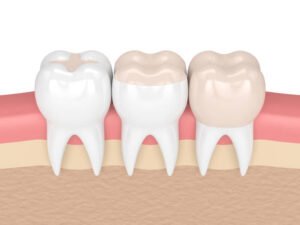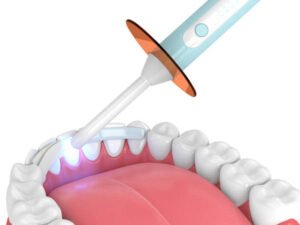Experiencing a tooth broken off at the gum line can be both painful and concerning. You might wonder if a dentist can pull such a tooth and what the procedure entails. This guide will give you detailed info on the process. It covers the reasons for tooth extraction and aftercare. It ensures you understand every part of this dental issue.
Why Teeth Break at the Gum Line
Teeth can break at the gum line for various reasons, including:
- Decay: Severe tooth decay can weaken a tooth, causing it to break off.
- Injury: Accidents or sports injuries can lead to a tooth breaking off at the gum line.
- Biting Hard Objects: Chewing on hard objects, like ice or hard candy, can cause a tooth to fracture.
- Large Fillings: A tooth with a large filling might not have enough structure to remain intact.
Can a Dentist Pull a Tooth Broken at the Gum Line?
Yes, a dentist can pull a tooth that is broken off at the gum line. The procedure is slightly more complex than a regular extraction because the broken tooth may not be easily accessible. Here’s how a dentist might handle it:
Simple Extraction
If part of the tooth is still visible above the gum line, the dentist may perform a simple extraction. This involves:
- Numbing the Area: A local anesthetic is used to numb the area around the broken tooth.
- Loosening the Tooth: The dentist uses special tools to loosen the tooth from the surrounding bone and gum tissue.
- Removing the Tooth: Once loosened, the dentist pulls the tooth out with forceps.
Surgical Extraction
If the tooth is broken below the gum line, a surgical extraction may be necessary. This procedure involves:
- Making an Incision: The dentist makes a small incision in the gum to access the broken tooth.
- Removing Bone and Tissue: In some cases, a small amount of bone around the tooth needs to be removed.
- Extracting the Tooth: The dentist then carefully removes the broken tooth.
- Stitching the Gum: The incision is closed with stitches to promote healing.
Preparing for the Extraction
Before the extraction, the dentist will study the broken tooth and bone. This study will include X-rays. This helps determine the best approach for the extraction.
What to Expect During the Procedure
During the extraction, you can expect the following:
- Numbing: The area will be numbed with a local anesthetic to prevent pain.
- Pressure, Not Pain: You may feel some pressure as the dentist works, but you should not feel pain.
- Sedation Options: For those with dental fear or complex extractions, they may have options for sedation. These include oral sedatives or IV sedation.
Recovery and Aftercare
Proper aftercare is essential for a smooth recovery. Here are some tips:
- Control Bleeding: Bite down on gauze to help form a blood clot. Change the gauze as needed.
- Manage Pain: Use over-the-counter pain relievers as recommended by your dentist.
- Reduce Swelling: Apply an ice pack to the outside of your cheek for 20-minute intervals.
- Eat Soft Foods: Stick to soft foods like yoghurt, mashed potatoes, and smoothies for the first few days.
- Avoid Straws: Drinking through a straw can dislodge the blood clot, leading to a painful condition called dry socket.
- Maintain Oral Hygiene: Gently rinse your mouth with salt water after 24 hours. Avoid brushing the extraction site directly.
Preventing Tooth Breakage
While accidents can happen, you can take steps to reduce the risk of breaking a tooth:
- Regular Dental Visits: Regular check-ups help catch problems early.
- Good Oral Hygiene: Brush twice daily and floss regularly to keep teeth strong.
- Avoid Hard Foods: Be cautious with hard foods and objects.
- Wear Protective Gear: Use mouthguards during sports to protect your teeth.
When to Contact Your Dentist
After an extraction, it’s essential to monitor your recovery. Contact your dentist if you experience:
- Severe Pain: Pain that does not improve with medication.
- Prolonged Bleeding: Bleeding that continues beyond 24 hours.
- Swelling: Swelling that worsens after a few days.
- Signs of Infection: Fever, increased pain, or discharge from the extraction site.
Conclusion
A dentist can effectively pull a tooth that is broken off at the gum line, though the procedure may be more complex than a standard extraction. Understanding the process is key. It goes from preparation to recovery. It can ease your concerns and ensure a smooth experience. If you have a broken tooth, contact your dentist. They can give you a consultation and the right treatment.
What is An Extreme Dental Emergency
Contact Old Town Dental Care
Dealing with a broken tooth can be stressful, but you don’t have to face it alone. Contact Old Town Dental Care today to schedule your consultation. Our experienced team is dedicated to providing compassionate and professional dental care, ensuring you receive the best treatment for your needs. Don’t wait—restore your smile and oral health with our expert services.
Frequently Asked Question
Can a broken tooth at the gum line be saved?
In some cases, a dentist might be able to save the tooth using procedures like root canal therapy and crown placement. However, if the damage is too severe, extraction may be necessary.
Is the extraction of a broken tooth painful?
No, the extraction process is not painful. Dentists use local anesthesia to numb the area. You may feel some pressure during the procedure, but you should not feel pain.
How long does recovery take after a tooth extraction?
Recovery typically takes a few days to a week. Follow your dentist’s aftercare instructions. For example, eat soft foods and avoid straws. This can help speed up the healing process.
What are the risks of leaving a broken tooth untreated?
Leaving a broken tooth untreated can lead to infection, which can spread to adjacent teeth and gums. It can also cause pain and increase the risk of abscess formation.
Can I eat normally after a tooth extraction?
You should avoid hard and sticky foods immediately after the extraction. Choose soft foods like yoghurt, mashed potatoes, and smoothies. Eat them for the first few days. This will let the extraction site heal.







